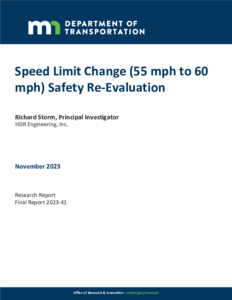Appendices to Evaluating the Effectiveness of the Minnesota Speed Management Program
Date Created
2007-05
Report Number
2007-21A
Description
Speed Limit Change (55 mph to 60 mph) Safety Re-Evaluation
Date Created
2023-11
Report Number
2023-41
Description










